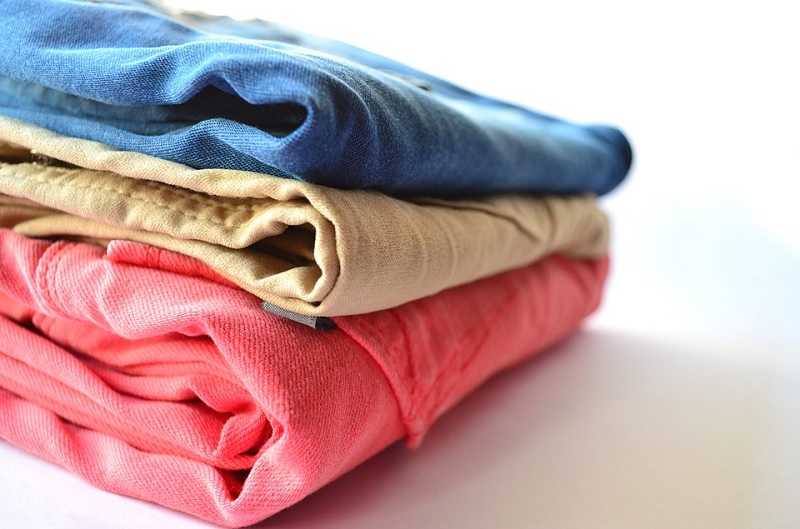We’ve all been there: you were in a rush, and tossed your favourite pair of jeans or shirt in the wash only to have it shrink beyond the point of being wearable.
Ruining clothes during the washing and drying process can be disheartening and a strain on your budget if it becomes a habit. No one wants to lose their favourite clothes to shrinkage.
Why Do Clothes Shrink When Washing and Drying?
The first step in preventing clothes from shrinking is to understand why they shrink in the first place.
The two major culprits are heat and agitation.
Cause 1: Heat
Heat, whether it is in the form of hot water during the wash or hot air in the dryer, causes the delicate fibres of the clothes to contract. The fibres become closer together and in turn result in a shrunken article of clothing.
Cause 2: Agitation
The second culprit, agitation, can occur in the washing machine or tumble dryer. In the washer, the clothes are tossed vigorously during the wash and spin cycles causing damage to the fibres and their ability to maintain their shape.
Traditional top load washers with a centre agitator are the worst offenders of over agitating fabrics.
Agitation can also take place during the drying process. Tumble dryers increase the airflow between garments by tumbling the clothes in the drum.
While this is a very effective method for drying clothes, it can also be damaging to the clothing’s fibres which enables shrinkage. One less aggressive way to dry clothes is by using an indoor clothes airer.
How to Prevent Clothes from Shrinking
1. Read the care label and follow its instructions
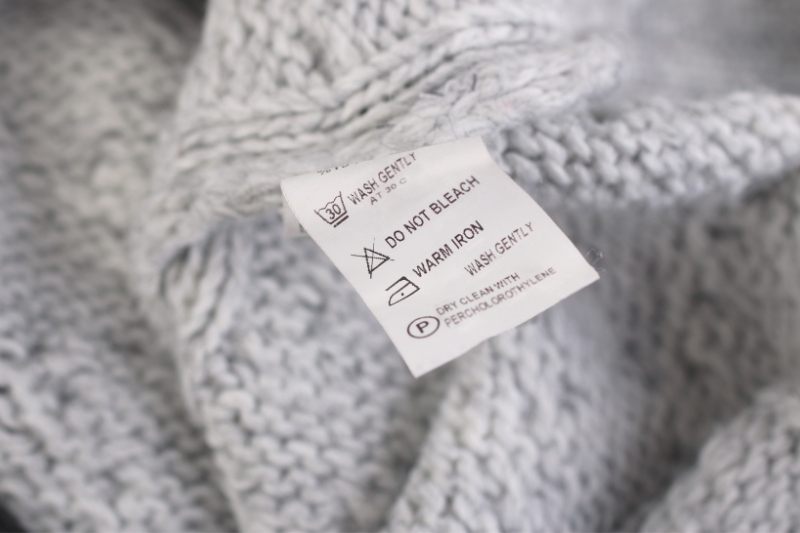
The most important action you can take in ensuring you preserve your clothes and prevent them from shrinking is to read the care instructions provided on the clothing’s label and follow them.
Manufacturers rarely, if ever, produce a garment without care instructions. These instructions are based off the type of fabric the clothing is crafted from and are the tried and true way to keep the fibres damage free.
Reading these instructions before purchasing a garment is a pre-emptive defence when it comes to dealing with shrinkage.
For example, if a shirt you want to buy says “hand wash only, air dry” on the label, you will know that washing it in a washing machine and drying it in a dryer will produce poor results.
Alternatively, shop for clothing that has been “prewashed” or “pre-shrunk”. The fabric and textiles used to create these garments have been previously treated to be resistant to shrinkage.
2. Use a cold and gentle washing cycle
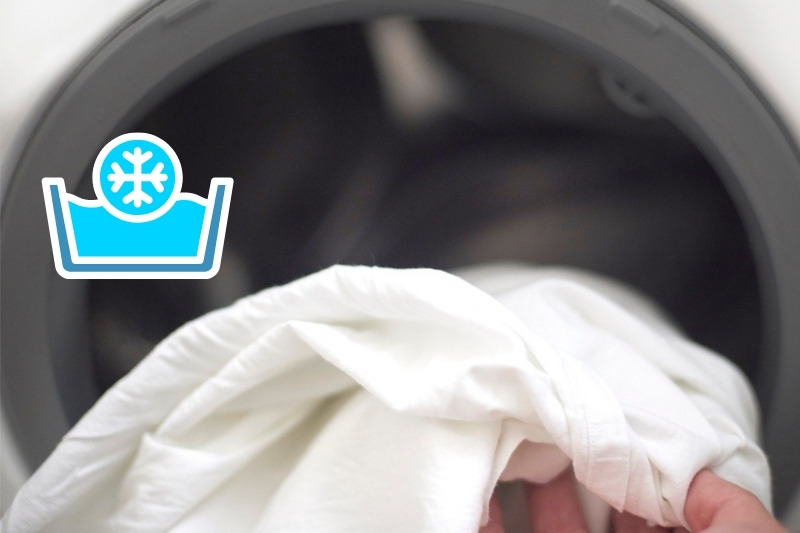
What if your clothing has no care instructions or the label has worn off? Then the next best things you can do to reduce your clothes from shrinking are using cold temperatures and reducing agitation.
When preparing to wash the clothing, use the coldest water setting on your washing machine. Select the most delicate and gentle cycles available and do not enable the second rinse option.
This will ensure your clothes are not over agitated during the washing process.
Some fabrics should be washed by hand to prevent shrinkage. These include wool, viscose, silk, satin and lace.
You could also consider taking wool and cashmere garments to a dry cleaner, as agitation could cause them to shrink.
3. Air dry, or use a tumble dryer with caution
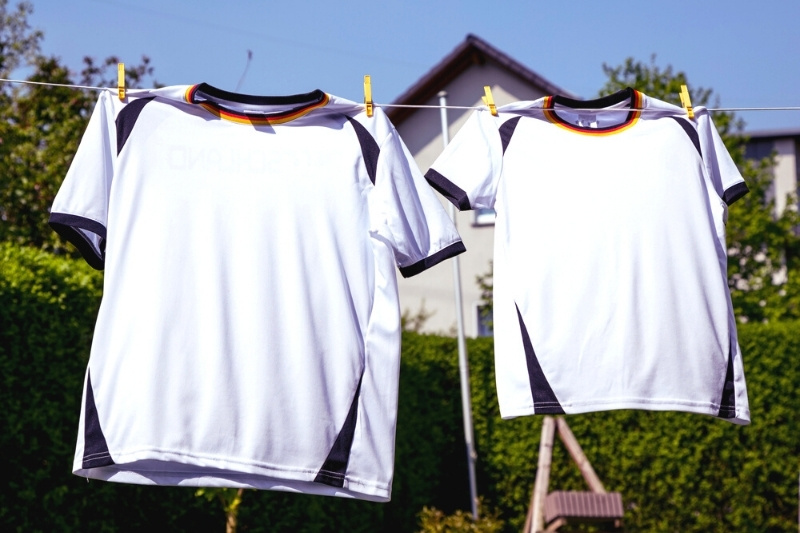
So your clothes have made it through being washed without shrinking, now onto drying.
Avoid using a tumble dryer as it adds unnecessary heat and agitation to delicate fabrics. Your clothes will be just as fresh and clean if you hang or air dry them properly.
If you need to use a tumble dryer, dry your clothes on the lowest heat and tumble setting. The tumble setting on most dryers uses very low heat or no heat to dry the clothing.
Ensure that the dryer’s lint trap is clean for maximum air flow and efficiency.
If you use a tumble dryer, remove the clothes while they are still damp rather than drying them fully.
When air drying, you can either hang your garments on a hanger or lay them flat on a breathable surface such as a drying rack. Heavy items such as sweaters and dresses may stretch undesirably when hung up damp.
The most important aspect of air drying is that there is air flow around the damp clothing. If there is not enough air flow you risk your clothes not fully drying, which could lead to mildew and mould.
If you are air drying inside, make sure it is in a well ventilated room. Using a dehumidifier or a fan pointed at the clothing as it dries is a perfect solution when windows cannot be opened.
Now that you know why clothes shrink during washing and drying you can take the necessary steps to stop your favourite clothes from shrinking.
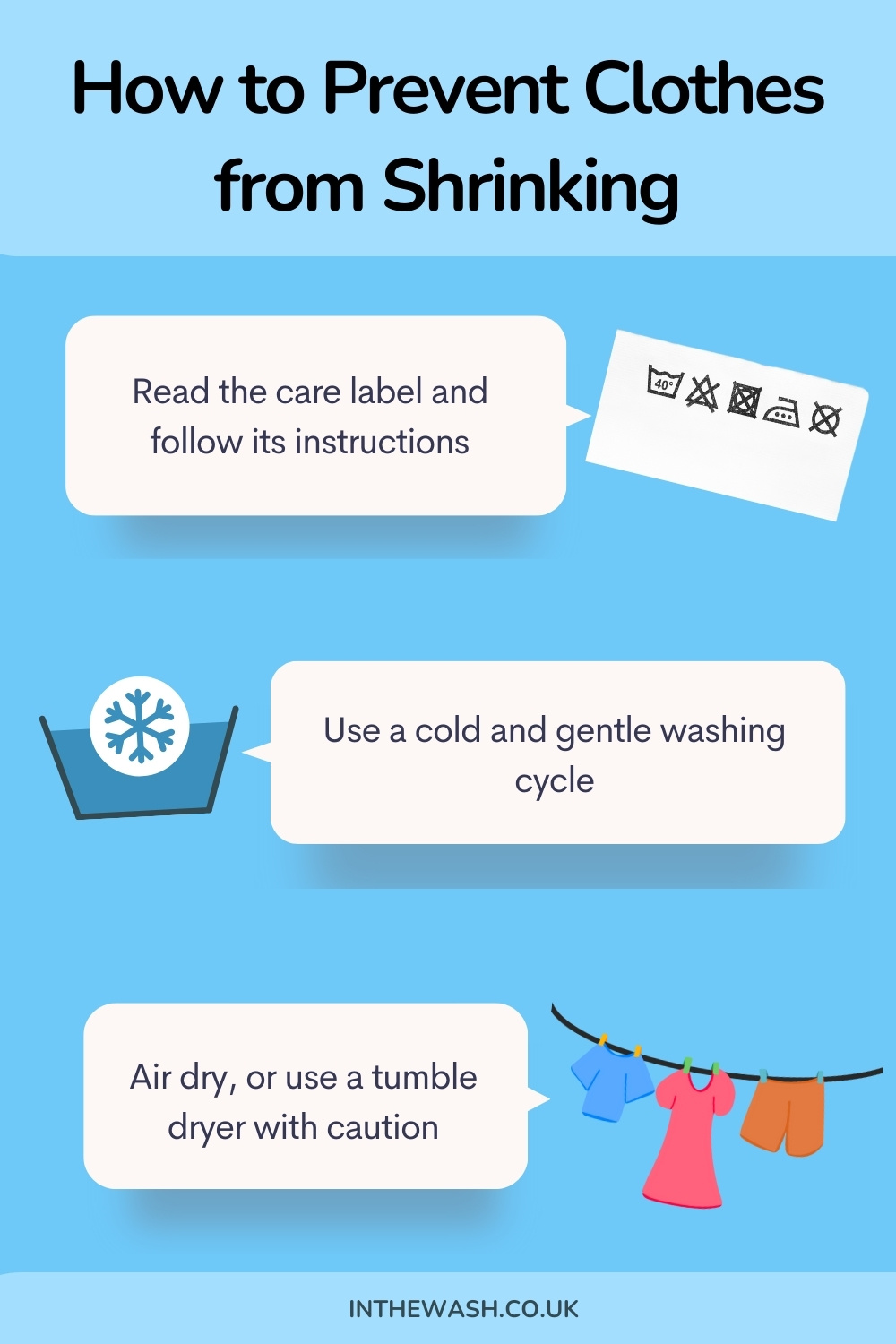

In The Wash is your guide to the best laundry and cleaning products, tips and tricks. Our mission is to solve the UK’s cleaning and laundry dilemmas!
